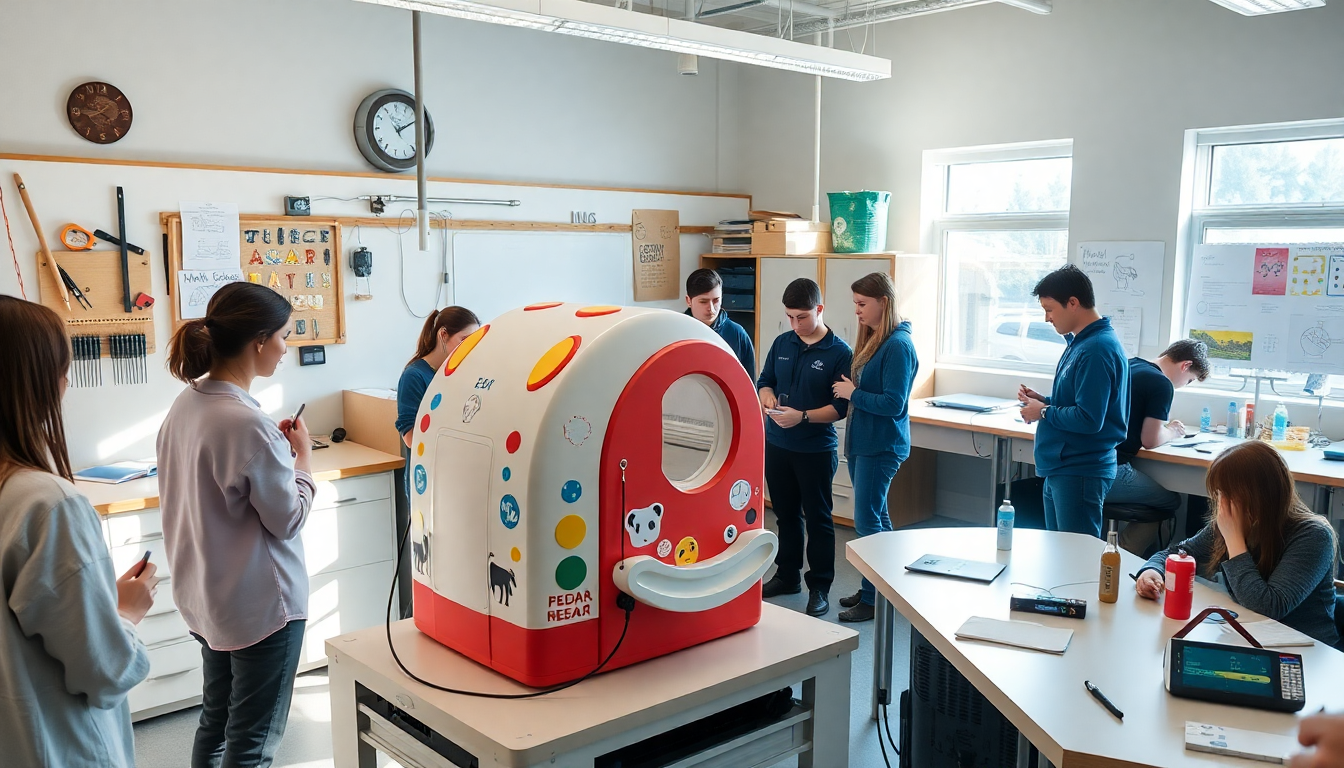Table of Contents
In a remarkable showcase of innovation and community spirit, a group of engineering students from Camosun College on Vancouver Island has designed and built a pediatric MRI simulator. This impressive project, which required over 5,000 hours of dedicated work over three and a half months, was officially unveiled recently and promises to make a significant difference in how children experience MRI procedures at Victoria General Hospital.
What Makes the Pediatric MRI Simulator Special?
The pediatric MRI simulator isn’t just your average model; it’s a near-exact replica of a real MRI machine, complete with the authentic look, sound, and feel. Its main goal? To prepare young patients mentally for the often intimidating experience of an MRI scan.
Dylan Snyder, one of the engineering students involved in this project, expressed how proud the team is of their achievement, noting its potential to positively impact children who face medical procedures that can induce anxiety.
Becki Steel, the child-life practice lead at Victoria General Hospital, highlighted the simulator’s dual benefits.
Not only does it help children understand what to expect during an MRI, but it also aids in reducing waiting times for actual scans. With many young patients needing a comforting and playful introduction to the procedure, the simulator serves as an essential tool to ease their fears while streamlining the process for medical staff.
Transforming Hospital Practices and Enhancing Patient Experience
At the moment, the hospital’s protocol involves sedating children aged eight and under for MRI scans, as many struggle to remain calm and still inside the machine for the duration of the procedure.
This often results in cancellations and long waits as children are rebooked for scans with sedation. Here’s where the simulator steps in as a game-changer. Children on the sedation waitlist who are deemed suitable will have the opportunity to practice with the simulator.
This hands-on experience helps them get used to the procedure, significantly increasing their chances of completing the scan without needing sedation.
Research suggests that about 90% of youth patients who successfully complete the simulator go on to have a successful MRI experience. This statistic highlights not only the simulator’s potential effectiveness but also its crucial role in enhancing the overall patient experience at the hospital.
Feedback from Young Patients and Future Possibilities
At the unveiling of the simulator, young patients Abby and Anika Norlund shared their thoughts. Both girls mentioned that while the MRI machine initially seemed intimidating, the actual experience turned out to be much less frightening than they had expected. Their feedback perfectly encapsulates the simulator’s mission of reducing anxiety and better preparing children for what they will encounter during a real MRI.
After such an intensive project, the students now feel a deep sense of fulfillment and pride in contributing to this meaningful initiative. Julianna Kwan, another student, expressed the relief that comes from knowing they have helped children navigate a potentially nerve-wracking experience. This innovative project not only showcases the technical skills of the students but also emphasizes the importance of empathy and understanding in healthcare.
Wrapping It Up
The pediatric MRI simulator developed by the students at Camosun College marks a significant leap forward in pediatric care. By addressing the emotional and psychological needs of young patients, this project could transform the way children face medical procedures. As healthcare continues to evolve, initiatives like this remind us of the critical role of innovation in improving patient outcomes and ensuring that even the youngest patients receive compassionate care.





